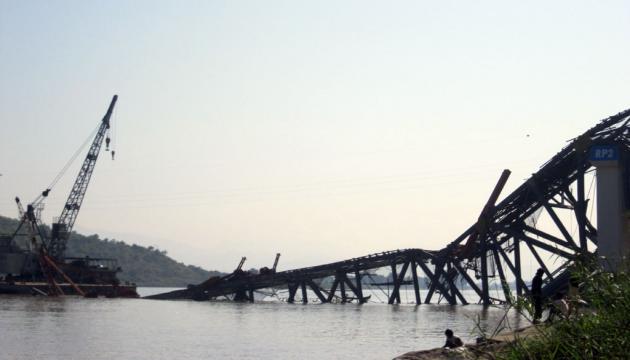Bangkok high-rises, North shaken by major earthquake in Myanmar

13 dead in Myanmar but no Thai casualties or damage reported
A powerful 6.8-magnitude earthquake rocked Myanmar at 8.12am yesterday morning, shaking Thailand’s North and rattling skyscrapers in the capital.
The 9.8-kilometre-deep earthquake was followed by two aftershocks, the first a 5.9 trembler at 8.30am, and the second a magnitude 6.1 quake at 5.54pm. The second aftershock was felt in Mae Hong Son, the National Disaster Warning Centre reported. With a depth of 10km, its epicentre was located in Myanmar, 442km from Mae Hong Son’s Pang Mapha district.
During the initial earthquake, residents of high-rises in Bangkok reported feeling their buildings sway and made emergency phone calls, but no structural damage or casualties were reported. A news programme from the TV Channel 3 station in the Maleenond building in the Khlong Toei area cited remarks from witnesses in the tower of tremors. The quake was also felt along Ratchadaphisek Road in downtown Bangkok.
Lertsin Raksasakulwong, a senior official at the Mineral Resources Department, which provided the official quake figures, said the quake originated from the Sagaing Fault in Myanmar, which could affect the Mae Hong Son Fault, one of the 14 active faults in Thailand. In March 2011, a 6.8 quake on the Sagaing Fault could also be felt in Bangkok, which is 1,100km away.
The department is installing seismological instruments in Mae Hong Son to monitor the Mae Hong Son faultline, which he said is 200km long, covering Mae Hong Son and Tak. He said later that all the measurements of yesterday’s quake were collected from instruments at the Meoi Fault, which stretches 250km from Tak, Kamphaeng Phet and Nakhon Sawan to Uthai Thani.
Prof Thanawat Jaruphongsakul, a seismologist at Chulalongkorn University, estimated the quake at 6.6, saying it originated from the Sagaing Fault, which spans Myanmar and Mae Hong Son province. Chiang Mai, located about 400km from the shock, also felt the quake.
He said the shallow depth of 10km would normally cause a type of crack called a transform fault, which resulted in the most damage nearest the epicentre. Yesterday’s quake would likely trigger another one on the Sichuan Fault in China, which links to others in Laos and Vietnam, in a domino effect, he said.
Thanawat called on the public not to panic, because Thailand would not directly sustain heavy destruction from such a quake, as there were not many major faultlines stretching past Thailand. He said the lone death of a native in Chiang Rai’s Mae Sai district during a recent quake was the only fatality ever recorded in Thailand.
Pennueng Wanichchai, a scientist at the Asian Institute of Technology, said the Sagaing quake, which he estimated at 6.5-6.8, was rare – only one in 100 years could be as strong or as near as 7.0.
Officials reported no damage at two dams in Kanchanaburi province after the earthquake.
